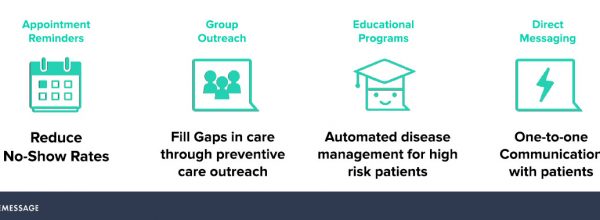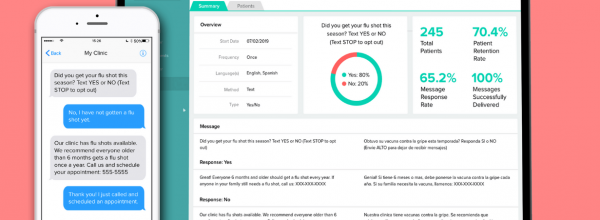Texting has become a ubiquitous communication platform. In health care, there is increased interest in using texting to connect with patients in between office visits —from sending reminders for upcoming appointments to messaging that assists with chronic disease self-management support. Many systems, including those in the safety net, are testing texting programs to determine what interventions provide value for their patients.

As part of CCI’s Texting for Better Care Program, UCSF’s Center for Vulnerable Populations (CVP) and Public Healthcare Evidence Network and Innovation eXchange (PHoENIX) developed this toolkit to provide background information as well as concrete examples relevant to safety net systems looking to implement a texting program.
The tools included here are derived primarily from the CCI grantees for the Texting for Care program in 2014-2015. The program evaluator, Informing Change, developed a final summary report Text Messaging in the Healthcare Safety Net that provides detailed insights about the program pilots. Grantees included public hospital and community clinic sites, and covered a wide range of texting use cases:
| Organization | Project Goal | Vendor |
| Petaluma Health Center | To better manage the referral process by closing more open referral appointments | eClinicalWorks |
| Los Angeles Department of Health Services Olive View-UCLA Medical Center | To improve the transition of care between inpatient/emergency department and outpatient settings | Ellipsis Health |
| San Francisco Department of Public Health | To reduce the “no-show” appointment rate | eClinicalWorks |
| Golden Valley Health Center | To reduce the “no-show” appointment rate | Twilio Communications |
| Northeast Valley Health Corporation | (1) To reduce the rate of broken appointments through texting reminders (2) To help patients with hypertension reduce their blood pressure levels | Teletask |
| Riverside County Health System | To help patients with diabetes achieve their self-management goals | Ellipsis Health |
| Asian Health Services | To provide youth access to health insurance information and enrollment assistance | Ellipsis Health |
| Sacramento Native American Health Center | To engage patients in substance abuse recovery programs | Health Crowd |
To share the lessons learned from CCI grantee sites, we have compiled the following information that might be helpful for other sites interested in launching their own programs:
- Example consent forms and processes (which document the wide variety of approaches/interpretations each site took with regard to HIPAA)
- Logic diagrams, showing the basic structure of the texting message flow (i.e., timing of messages, automatic replies, etc.)
- Information about specific vendors. Please note that this should not be construed as an endorsement or recommendation of any vendor; CCI and grantees are merely sharing their experiences with vendors.
Although there is a lot of research that shows the potential for texting to improve outcomes, there have been no studies, to our knowledge, examining widespread implementation of texting. Our in-depth examination of the CCI grantees identified several key barriers and facilitators to implementation in the safety net:
- Programs received widespread patient and staff support, but barriers centered around other technical and legal liability-related issues.
- The functionality of the systems was limited, with many platforms only being uni-directional (not allowing patients to respond to a text sent by a system/provider), and only three sites integrating texting within electronic health records (EHRs).
- Institutional-level privacy and security concerns around obtaining patient consent and message content security (mostly related to HIPAA compliance) were significant barriers. Most sites manually consented each patient and no site messaged sensitive health information.
Detailed lessons from CCI’s eight Texting for Better Care grantees gathered by Informing Change and UCSF provide insight into challenges and best practices texting projects from 2014-2015. See report Text Messaging in the Healthcare Safety Net prepared by Informing Change. A detailed research paper developed by UCSF outlining the implementation across CCI Texting for Care grantees is forthcoming.
Focus Areas
Selecting a Vendor
No two texting program are the same, and that means that there is no one-sized-fits-all product for reaching patients with texting. Here is a rundown of what you need to consider when selecting a vendor.
Developing Messaging Content and Logic
Whatever your intervention, composing and organizing the messages that your patients will receive is daunting. Find examples of text message content and logic from our grantee pilots.
Obtaining Consent and Ensuring Privacy
In healthcare, regulations abound to ensure that patient information is not misused. This section includes a number of sample consent forms and information on maintaining patient privacy.
Implementation Use Case
What does a texting program look like when you put it all together? Download packets of resources developed by two of our grantees: San Francisco Department of Public Health and Los Angeles County Department of Health Services.
External Resources
This section contains useful resources for planning your texting intervention, including information on government initiatives and toolkits created by other organizations.
Research on Texting
A bibliography of academic findings on using text messaging in a healthcare setting.
This toolkit was developed in part through the UCSF Center for Vulnerable Populations (CVP) and Public Healthcare Evidence Network and Innovation eXchange (PHoENIX), supported by the Agency for Healthcare Research and Quality (AHRQ) grant number R24HS022047.










